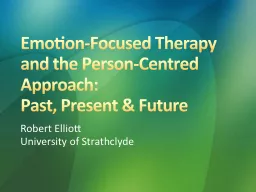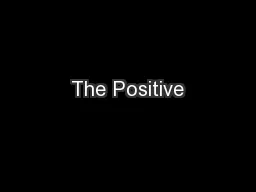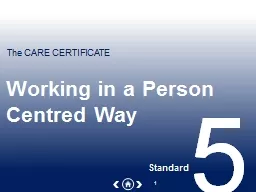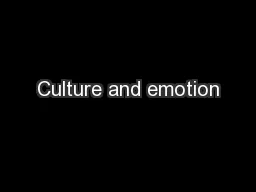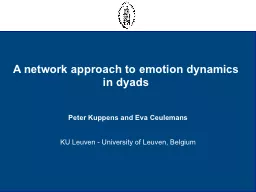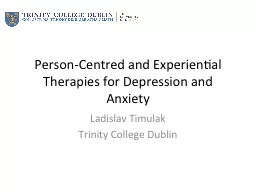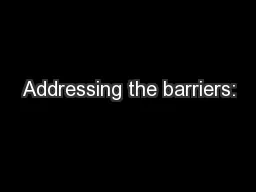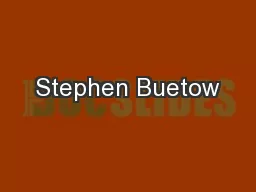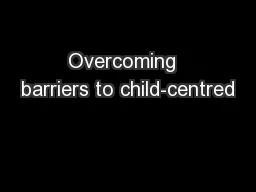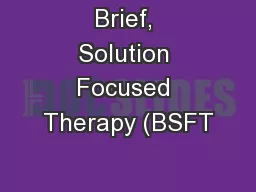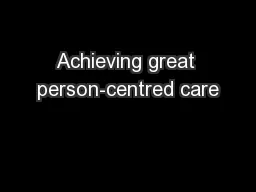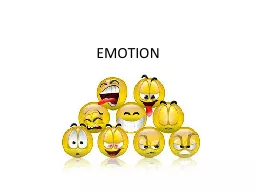PPT-Emotion-Focused Therapy and the Person-Centred Approach
Author : natalia-silvester | Published Date : 2016-02-29
Past Present amp Future Robert Elliott University of Strathclyde A Personal Journey Five years ago Invited to join the Counselling Unit Walked into a place
Presentation Embed Code
Download Presentation
Download Presentation The PPT/PDF document "Emotion-Focused Therapy and the Person-C..." is the property of its rightful owner. Permission is granted to download and print the materials on this website for personal, non-commercial use only, and to display it on your personal computer provided you do not modify the materials and that you retain all copyright notices contained in the materials. By downloading content from our website, you accept the terms of this agreement.
Emotion-Focused Therapy and the Person-Centred Approach: Transcript
Download Rules Of Document
"Emotion-Focused Therapy and the Person-Centred Approach"The content belongs to its owner. You may download and print it for personal use, without modification, and keep all copyright notices. By downloading, you agree to these terms.
Related Documents

